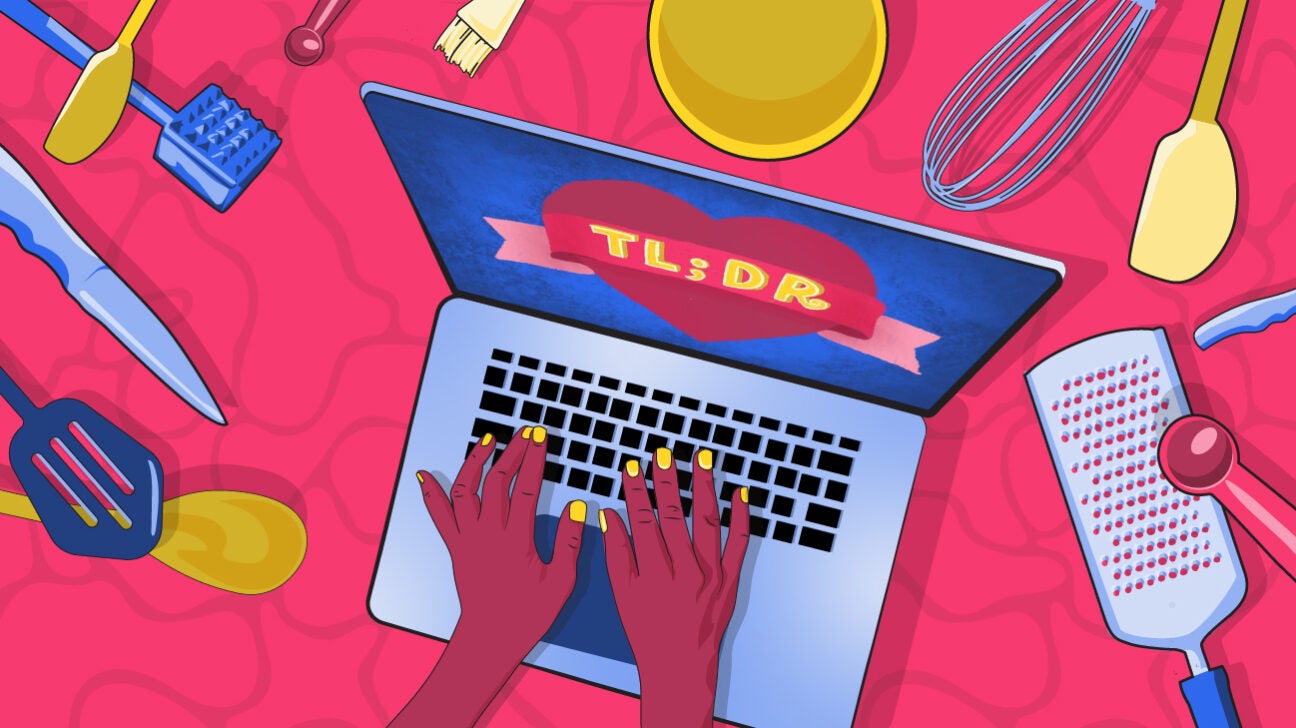Shopping online for groceries is oh-so-convenient (especially over the last 2 pandemic-riddled years). But did you know that when it comes to labeling, the items you order online may not be as regulated as the ones you buy in stores?

In a recent study, researchers at NYU and Tufts University looked at online grocery sales. They found that only one-third of products examined included the nutritional information required to appear on products in brick-and-mortar stores, such as food allergens and the percentage of juice in fruit drinks.
“At the same time, voluntary nutrition-related claims were more frequently and conspicuously displayed than the mandatory information — suggesting that in the absence of regulation, the information that is highlighted is not necessarily the most needed,” says Sean Cash, professor of global nutrition at the Friedman School of Nutrition Science and Policy at Tufts University.
Cash and team analyzed the standardized information panels of 10 packaged foods — including bread, cereals, and drinks — sold at 9 major online grocery retailers. The Food and Drug Administration (FDA) requires that the labels on products sold in stores include Nutrition Facts, a list of ingredients, common food allergens, and, for fruit drinks, the percentage of juice.
Here’s what the researchers found for the products they looked at:
Findings
- Required information was included and legible on about 36.5 percent of products.
- Potential allergens were stated on only 11.4 percent of products.
- Nutrition Facts and ingredient lists were listed about half the time.
- Health- and nutrition-related claims such as “low sodium” on online product images were more common, appearing on 63.5 percent of products.
While the products are subject to the same regulation, Jennifer Pomeranz, an assistant professor of public health policy and management at NYU School of Global Public Health, says the online retailers are not subject to requirements to display products according to the regulations that apply to labels directly on the products.
This lack of information on food products comes with safety concerns for people who need to look out for allergens, sodium, or sugar.
“If potential allergens and/or inaccurate ingredients are listed, this may lead to someone consuming a potential ingredient they could have an allergic response to,” says Erin Palinski-Wade, RD, author of 2 Day Diabetes Diet.
“For people on medically prescribed diets, such as those with kidney disease or diabetes, it is important to understand the specific amounts of certain nutrients (for instance, grams of protein and carbohydrates, respectively),” Palinski-Wade says, “and not having access to that information can make it difficult for these consumers to select food products that match their needs.”
Cash adds that scientific reviews incorporating data “from many studies have shown that food labels do indeed make a difference at the population level, so not having this information undermines consumer health.”
How lack of labeling is possible and what to do
About 45 percent of consumers increased online grocery shopping during the pandemic, with 30 percent shopping less in-store, according to a report published by sales and marketing agency Acosta in August 2021. However, regulations have lagged in speed.
“There is no clear regulation right now expressly requiring any entity to provide this information,” says Pomeranz.
The researchers note that three federal agencies have existing regulatory authority over food labeling, online sales and advertising, and Supplemental Nutrition Assistance Program (SNAP) retailers — the FDA, the Federal Trade Commission (FTC), and the U.S. Department of Agriculture (USDA), respectively. They believe these agencies’ existing authorities can be leveraged to address gaps in labeling requirements in the online food retail environment.
“Online settings raise new questions regarding who is responsible for ensuring that consumers can access this information — manufacturers have to put this information on food packaging, but right now there is no requirement that it be displayed in a particular way in online retail,” says Cash.
If people want to see the regulations change, he says, they can reach out to legislators.
“Our analysis shows that three agencies — the FDA, FTC, and USDA — already have authority that could require or compel online retailers to provide more consistent information. Congress could also directly require changes through new legislation. For example, a bill introduced by Rep. Pallone (NJ) and others last year included a provision to do just that,” says Cash.
While you wait for regulations to change, if you want to buy a food product online and its label is missing information you’re interested in, Palinski-Wade says to visit the manufacturer’s website to access the most accurate information on that product.
Moreover, Cash says to let online retailers know that you can’t easily find label information.
“[There’s] great potential for online platforms to actually be a place where consumers can be better-informed, but right now we’re missing that opportunity by regulating our 21st-century marketplaces with rules designed for the last century,” he says.

0 Commentaires